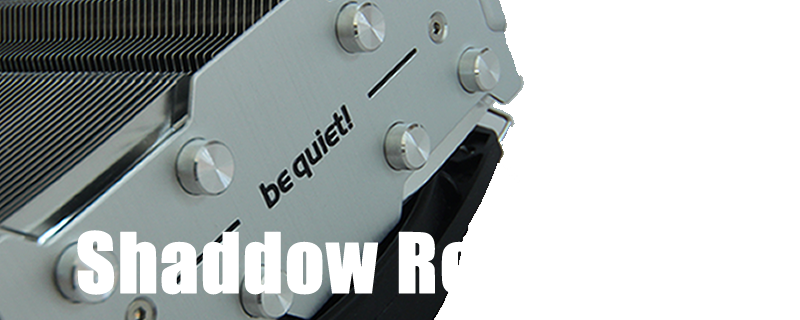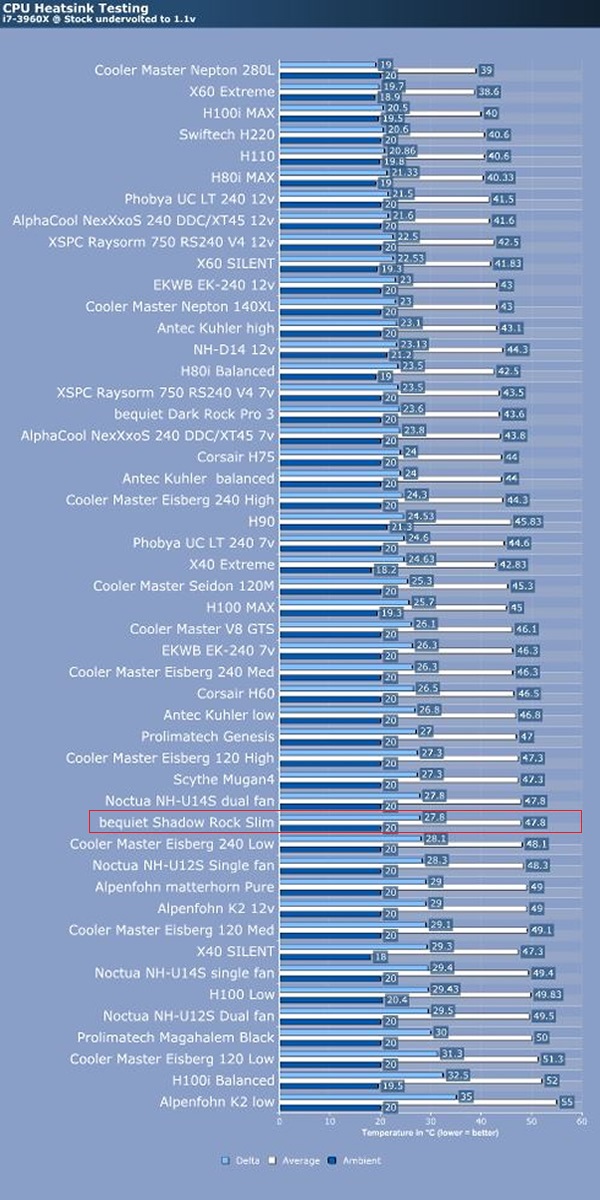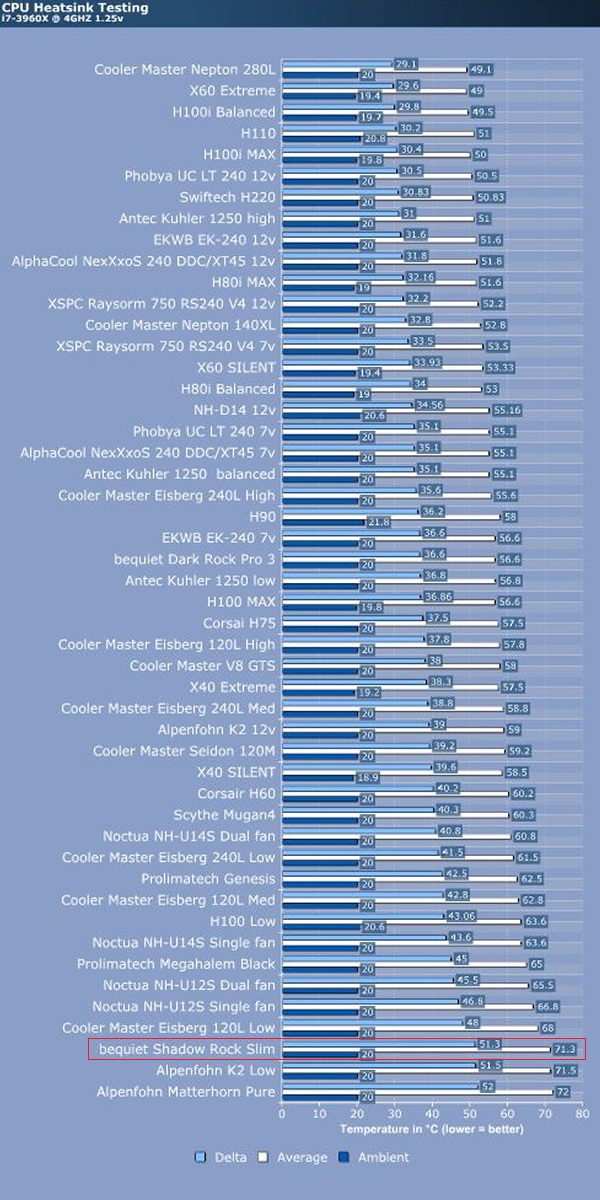bequiet Shadow Rock Slim Review
Performance and Testing
The test set up consisted of the following
Intel i7 3960X [email protected] 1.1v (undervolted) 4.0GHz @ 1.25v 4.4GHz @ 1.35v 4.6GHz @ 1.45v Gigabyte X79 UD3 Corsair Vengeance LP Memory Corsair HX850 V2 Corsair Force GT 60GB Coolermaster Storm Trooper.Â
The graphs are now in jpeg format for all the mobile device users out there and are placed in order with the best performing at the top so as to help better visualise where the cooler we’re testing comes in the pack.
As usual we’ll be testing our coolers at varying levels of overclock and increasing levels of voltage. This in turn of course means increasing levels of heat which the coolers need to dissipate. To begin with we start with the undervolted stock speed. Why undervolted? well if you have things set on “Auto”, you may well be using more volts than are actually required to run at the chosen frequency, for example our 3960s will run quite happily at just 1.1volts, solid as a rock, 24/7, and as such we use this as our starting point.
Continuity is very important in testing, and for this reason we keep as many of the potential variables as locked down as possible. We will be using OCCT in Linpack X64, AVX compatible with all logical cores tested and 90% free memory utilised. The test is set up to run automatically with just a few clicks to set it going. A 10 minute idle followed by 30 minutes of testing and a 5 minute cool down is the order of the day and brings the total test time per clock speed to 45 minutes. So as to remove subjectivity in determining whether a CPU has failed, OCCT is set to stop the test and register a fail should the max temp exceed 80 degrees. In testing we noted that if even just one of the cores exceeds 82 degrees OCCT halts the test and a fail is recorded.
With a TDP of just 160W we’re not expecting the Shadow Rock Slim to romp home to a resounding victory. However at these low volts it does seem to be doing a rather good job of keeping things cool. Better than we expected in fact. Could the Slim be made of the same stuff as the Dark Rock Pro3?
Â
Â
Turning now to the 4GHz test we up the voltage to 1.25 volts, this is what is deemed normally as stock volts. Something we are always harping on about on the forums is AUTO does not mean stock volts, and normally if you overclocking with “auto” volts the motherboard will be upping the volts much more than needed if you were to do it manually. By whichever means it happens, upping the volts (especially from our 1.1v undervolt) does have a big impact on temps, with an average increase of 10-15 degrees seen in the results.
At the higher levels of heat generated by the increase in voltage required for the 4.0GHz overclock, fan performance, although still a factor becomes less critical, replaced instead by a coolers ability to conduct the heat up the heat pipes and more crucially the total surface area of the fins enabling convection to the atmosphere. In the case of AIOs and water cooling the surface area of the radiator and the efficiency of the contact plate begin to play more of a factor.Â
Cranking things up we see the Slim slip to near the bottom of the charts, which to be honest is where we kind of think it should be given it’s meagre dimensions. It does though, still manage to better the Matterhorn pure which is slightly deeper and has more heat pipes, so not so bad a show after all.
Unfortunately this is where testing ended as the Slim was unable to tame the temps created at 4.4GHz. This shouldn’t be seen as a criticism of the Slim, it is, after all, a small and lightweight cooler and not designed to take this sort of punishment.





